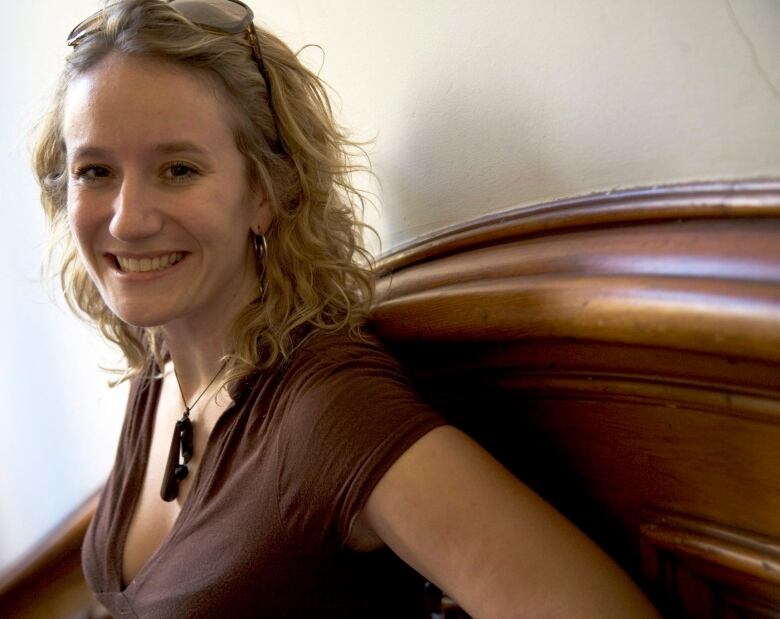Finstas: Using 'fake' social media accounts to reveal your authentic self
Some Instagram users hide in plain sight of their friends but not of potential employers

"Be careful about what you post online."
Teens and young people constantly hear this advice, especially as our ever-connected, increasingly public lives make it so that an online misstep could stand in the way of getting into a top schoolor landing a dream job.
Now, as a consequence, many of them have created multiple accounts on social media platforms, aimed at different audiencesnot just forprivacy, but also foremployability.
On Instagram, these digital double identities are reflected through Rinstaand Finstaaccounts. A Finstais a "fake" Instagram account. The best way to understand its use is to compare it to a Rinsta,or "real" account.
A Rinsta account is the one a stranger would find if theylook you up online. Often linked to the user's first and last name, such accounts tend to be more easily searchable. If a potential employer or someone on a college admissions committee Googles you, the Rinsta account would likely appear in their search results.
A Finsta account, on the other hand, usually has a screen name that is based on an inside jokeor some identifying characteristic that only that person's close friends would know about, explains Brooke Erin Duffy, a communications professor at Cornell University, who has been following this phenomenon among her undergraduate students.

The irony in this is that people's Finsta accounts tend to be more real or authentic, because they're intended just for close friends, whereas Rinstas, the "real" accounts, are more highly curated for public view.
It's a lot of work to maintain multiple accounts, which raises the question, why bother? The answer has a lot to do with the notion of context collapse.Popularized by researcher danah boyd (who spells her name lowercase), the term describes the way factions of our offline lives converge through social media.
What are the potential outcomes of whatever I might post, for the next year or five years down the road?Brooke Erin Duffy, communications professor
It used to be thatyoung people had their high school friends, then their college friends, their parents, and their employer, and they were all somewhat separate. Butnow that we have these centralized social media accounts, allthose aspects of our lives, those various contexts, collapse on top of one another.
Because of that, young people are becoming increasingly aware that it's not just a specific group of friends that are looking at the content they post. Indeed, what is intended for a BFF could very well end up on a boss's computer screen.
That concern over surveillance by potential employers, says Duffy,drivesthe Finsta phenomenon.

In fact, says Duffy, her university-aged students are more concerned about being monitored by employers than by marketers, advertisers, parents, or even the government, leading her to believe that it's the precarious nature of today's job market that is the driving factor behind these double identities.
She also points out that for her college students, Finsta accounts are focused on pushing back against the performative nature of Instagram and the need to present a polished life. Alot of what they post "is being silly, being funny, and not having to worry about certain images following you because they're public."
'A place to be themselves'
So while those unfamiliar with the world of Finstas might assume young people are posting the risqu or inappropriate content they're cautioned against onto these hidden or "fake" profiles, more often than not, "they just want a place to be themselves, without being under constant scrutiny or always having to think about how the outside world sees them."
When I reached out to Kelly Kitagawa, a former student who is an active YouTuber and savvy social media user, she echoed Duffy's findings. As many as 50 per centof her peers have a hidden Instagram account, and mostly what they post is "lighthearted comedic content, that isn't exactly polished. I see most people use it as a semi-private space to talk about the highs and the lows."

In that way, Finstas present a different perspective on why social media users have multiple accounts. "We worry so much about teens posting explicit or inappropriate content," says Duffy, "but here we see them posting images of themselves without makeup, figuring out life, and sharing their ups and downs."
That's a sharp contrast to the images of perfection we often see on Instagram, where each "spontaneous" shot is often the result of dozens of takes to get the image just right.
After all, the highly curated version of real life that has become synonymous with Instagram feeds full of "avocado toast and sunset beachscapes and clinking champagne glasses" conflicts with the tenets of social media, like authenticity and relatability. Finstas, says Duffy, are "an attempt to regain that."
"Even if it's just with your very close friends, it is a way to show how you're actually living, rather than a posed, planned and curated version of yourself," adds Kitagawa.












_(720p).jpg)


 OFFICIAL HD MUSIC VIDEO.jpg)
.jpg)



























































































